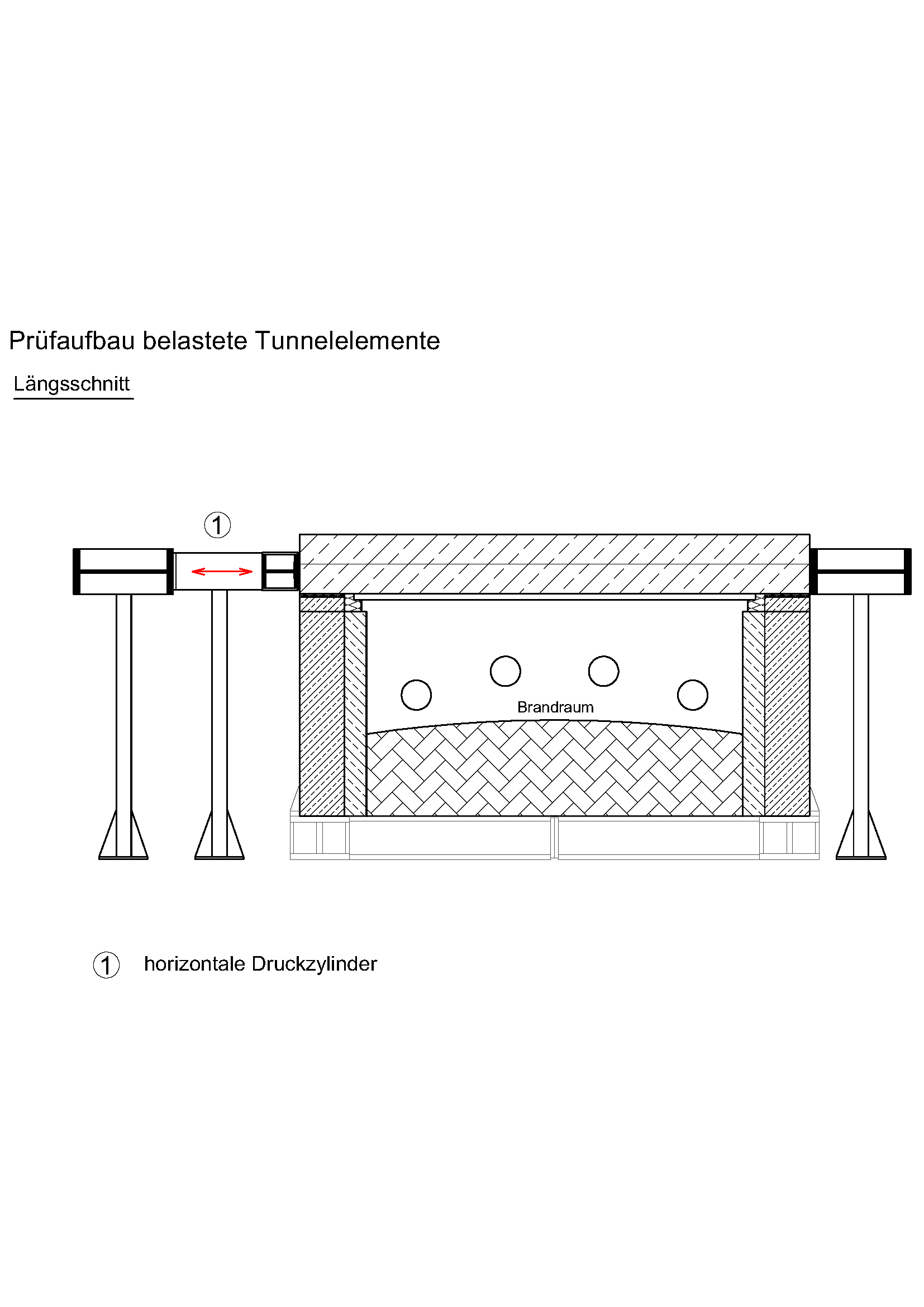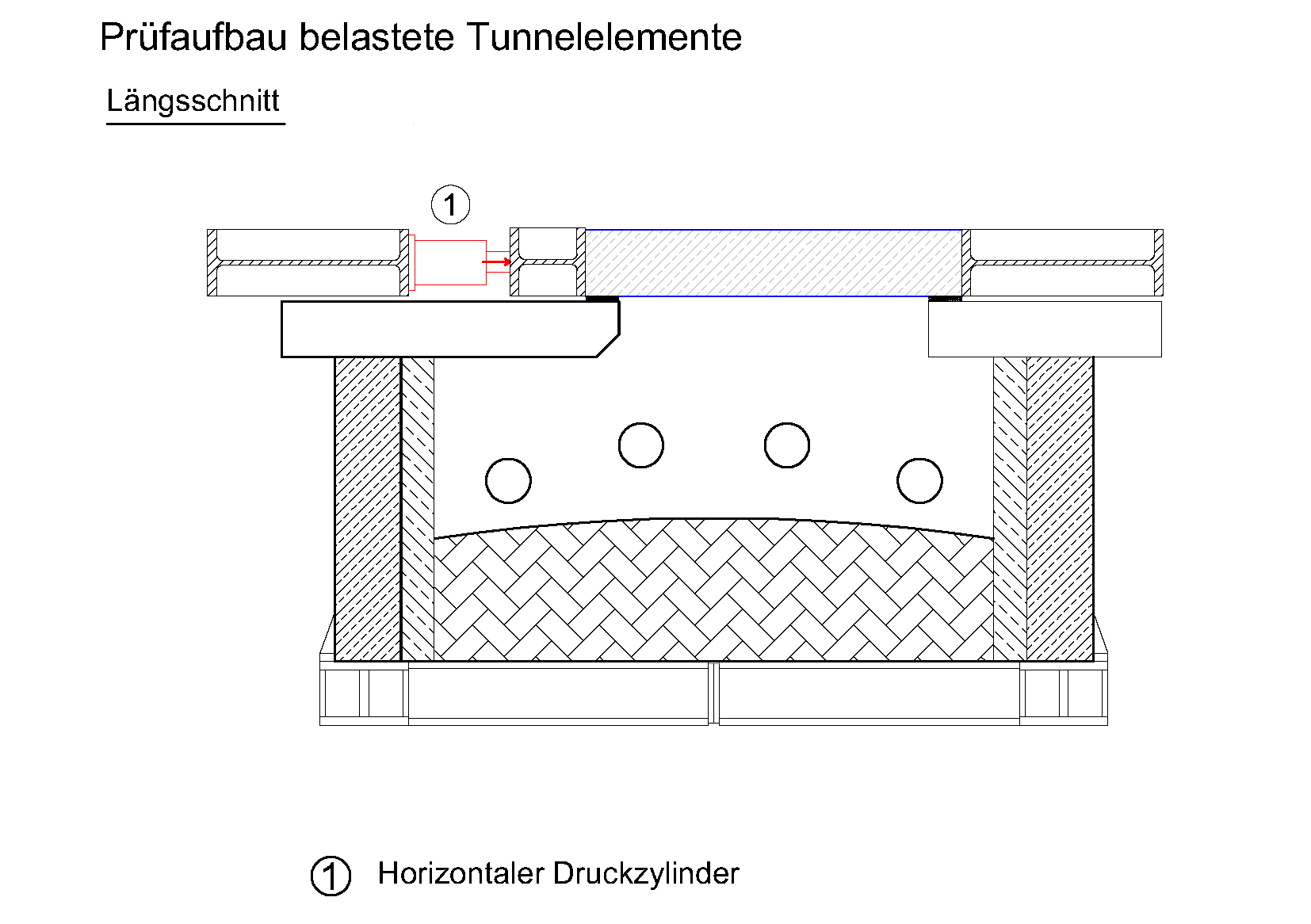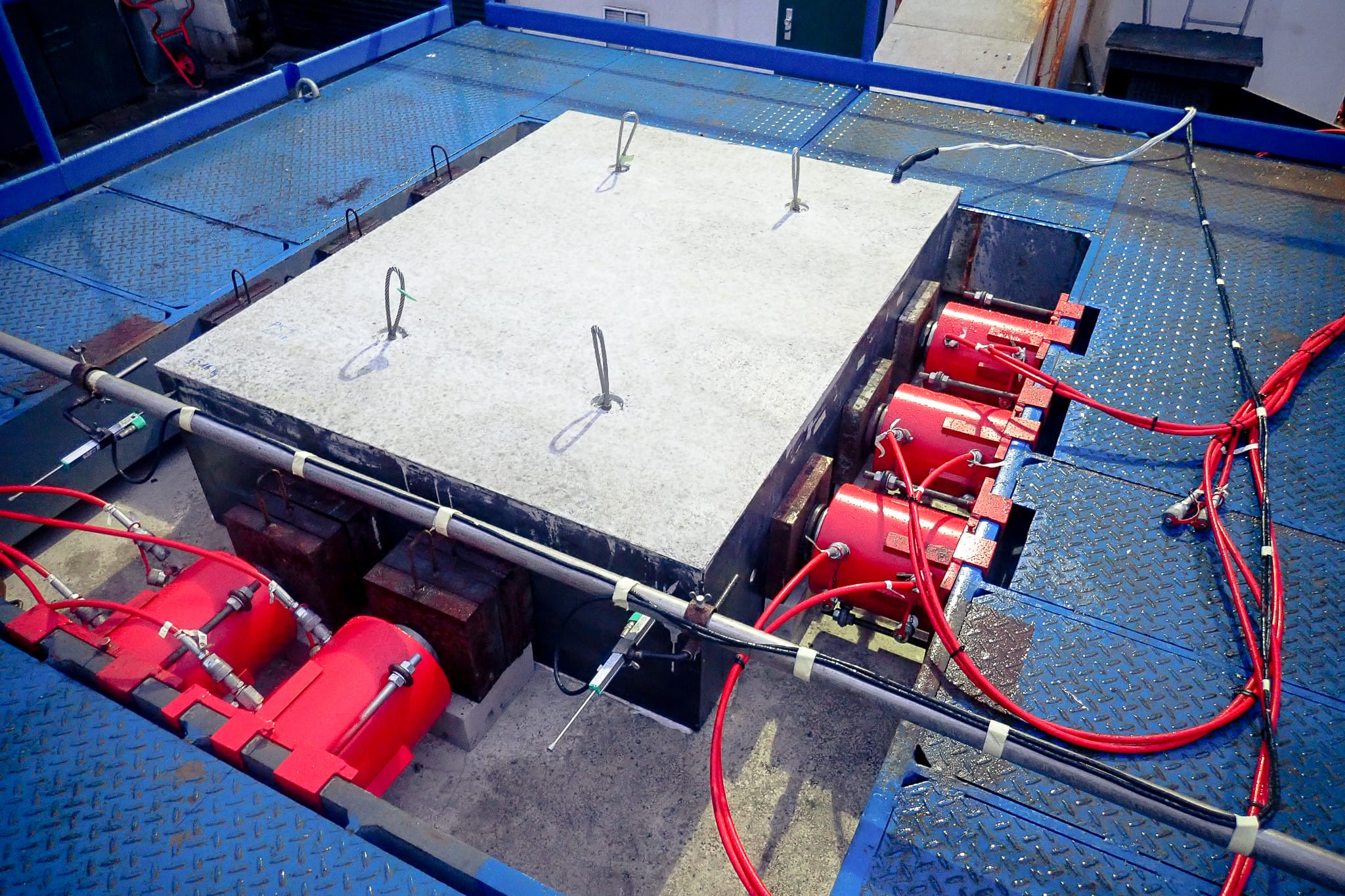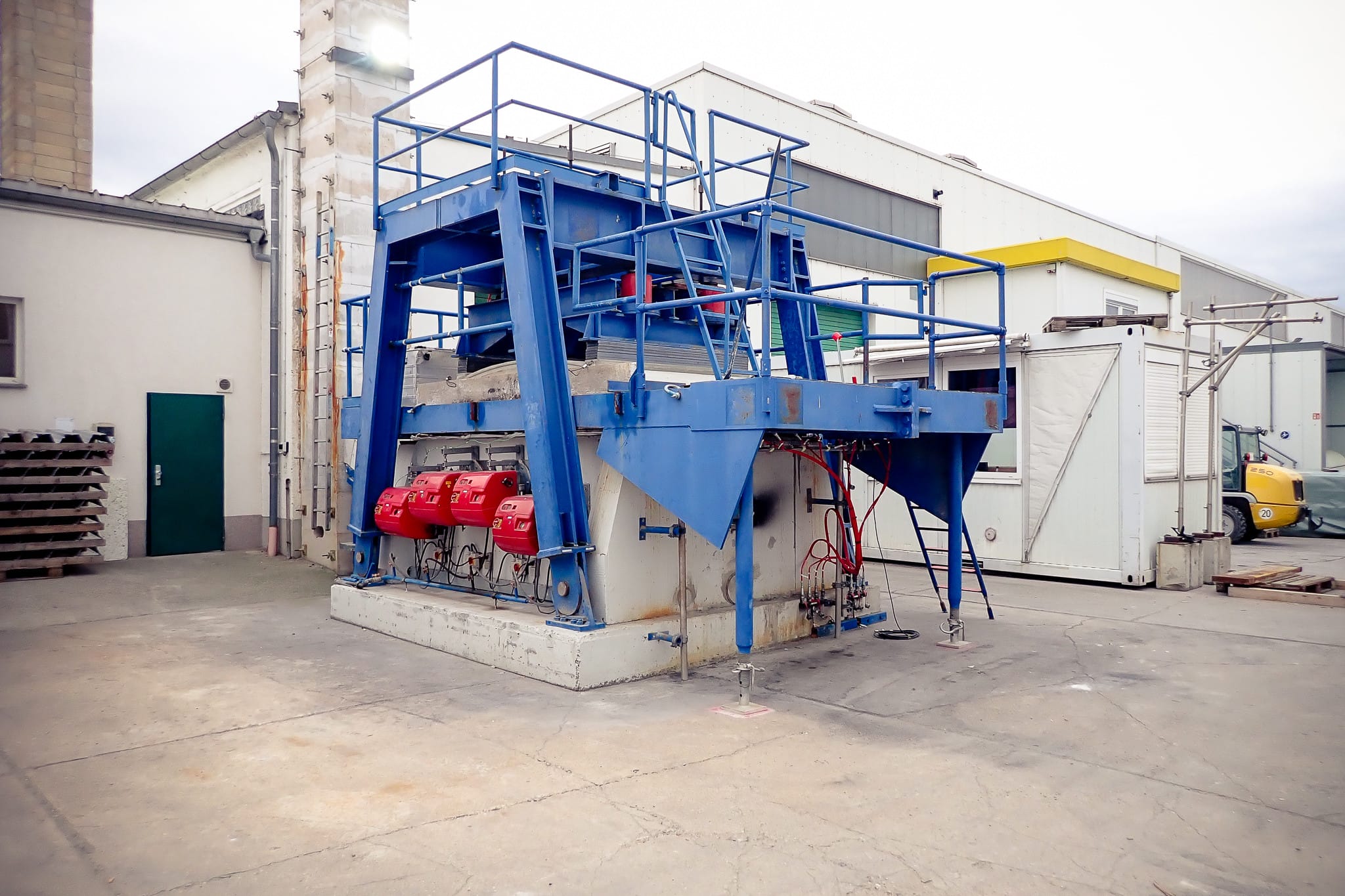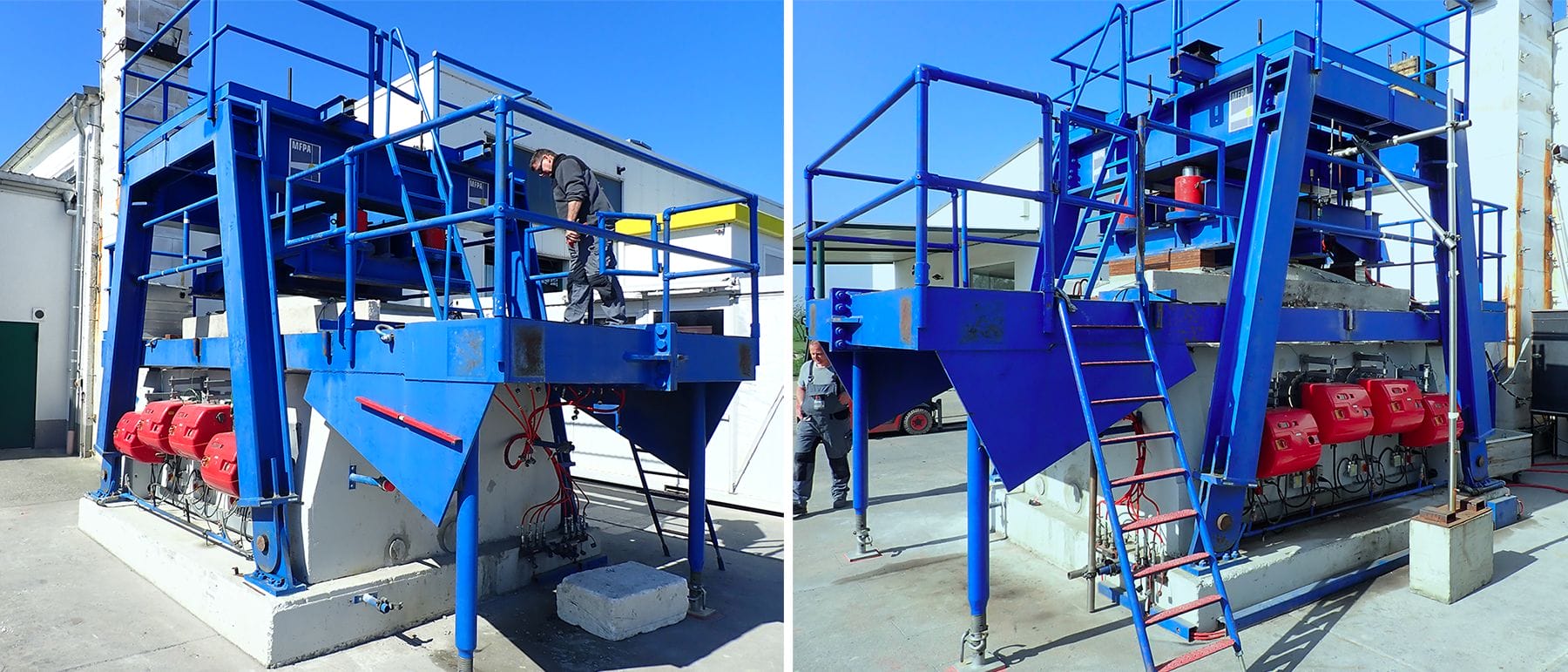
Experimental testing of tunnel concretes and fire protection equipment for tunnel structures is not explicitly governed by standards, but is usually done project-specifically and/or following various technical rules and guidelines such as:
- ZTV-ING, section 5 tunnel construction,
- EBA 853 RL,
- MFPA – standard testing (this original method),
- ÖVB guideline,
- Efectis guideline,
- project-specific testing conditions/specifications made by the building contractor.
Contact person
Dipl.-Ing. Michael Juknat
T +49 (0)341 6582-146
F +49 (0)341 6582-197
A special characteristic of experimental testing of special tunnel concrete and/or fire protection equipment fastened to it (such as fire protection panels or special temperature-resistant fire protection plaster) is the rapid increase of temperature during the first few minutes of testing. This includes temperature-time scenarios such as:
- ZTV-ING / extended ZTV-ING / EBA curve,
- HC curve according to DIN EN 1363-2,
- HCmod curve,
- RWS fire curve,
- project-specific fire curves.
The testing and general conditions indicated above are taken into account in the accredited original “tunnel fire” procedure.
When assessing tunnel concretes, the concrete composition (aggregates used, type of binder set, additives) and the resulting properties of the fresh and hardened concrete (texture of fresh concrete, concrete compressive strength), as well as the type of exposure, including the geometry of thermally stressed concrete components, have the greatest impact on the spalling and heat soaking behaviour of tunnel components.
Fire tests are currently the only method to reliably determine the fire and spallation behaviour of a loaded tunnel component at full scale. The characteristic of a fire scenario that is harmful to components is shaped by three properties in particular: the speed at which the temperature increases at the start of heat exposure, the highest temperature reached and the temperature integral that is influenced by the duration of the fire.
The focus of experimental assessments of fire protection equipment is usually to establish that the protective layers (fire protection plaster and panels) effectively protect the concrete sample against strong thermal impact over the entire testing period. In this context it is usually required to verify not only the stability of the base concrete, but also the application form of the fire protection measure, as well as the type and distance between the chosen mounting systems and support structures. In addition, heating of the so-called interface zone (between the fire protection equipment and the structural concrete) and the heat soaking behaviour of the concrete component also plays an important role.
Further information
Samples with dimensions of up to l x w x h = 3,430 mm x approx. 1,800 mm … 2,000 mm x 300 mm … 450 mm can be examined in tunnel fire experiments.
In fire tests under load, up to 5.5 MN of external mechanical stress each can be added from different directions of loading, depending on the respective test set-up.
The heating behaviour in the interface zone and the heat soaking behaviour in the concrete samples can be recorded using special temperature sensors.
Special standard spacers with measuring points at 20, 40, 60, 80, 100, 125, 150, 200 and 250 mm are usually used for this purpose. This allows for the temperature increase inside the sample to be fully recorded during fire testing in relation to surface changes.
The selection of samples, the geometry and composition of materials used is determined for each project and coordinated with the client. Possible variations are reviewed and documented in line with the client’s requirements. The results are compared to threshold values that were defined in advance.
In line with testing experience and the procedures described in different guidelines and technical rules, it is always recommended to perform at least two tests on two identical samples. Any other approaches are explicitly coordinated with the client when drawing up the testing concept while preparing the project.
Experimental assessment of tunnel concretes and fire protection equipment is carried out in line with the familiar technical regulations or the respective project-specific documentation and based on arrangements made with the client and/or their advisers in advance.
The following fundamental parameters are determined.
Precise stock-taking of the concrete surface that is to be tested or assessed is performed before starting any tests, and the weight and humidity content of all components is determined.
While testing takes place, recording of general observations must take place in line with customary test monitoring corresponding to the familiar basic testing standards for determining fire resistance (e.g. DIN EN 1363-1, pt. 10.4.7: escaping smoke, crack formation, melting, softening, spalling and charring of construction materials).
The following parameters are usually relevant when performing the test:
- surface condition before and after the fire test,
- loss in mass due to thermal and possibly additional mechanical exposure,
- humidity content and age of the concrete samples on the testing days,
- temperatures in the test chamber,
- heat soaking behaviour on and inside the sample,
- bearing capacity – duration in minutes completed, for which the sample maintains its ability to bear the test load during testing,
- recording of horizontal and vertical deformation
Since 2008, MFPA Leipzig GmbH has performed more than 300 tunnel fire experiments as part of numerous projects around the world.
Please find below a list of selected projects.
- BASt research projects
- New Kaiser-Wilhelm-Tunnel, Cochem, Germany
- North/South Line or Noord/Zuidlijn, Amsterdam, Netherlands
- Expansion Mittlerer Ring, Munich, Germany
- Sluiskil-Tunnel, Gent, Netherlands
- Milano-Naples tunnel, Italy
- Metro Copenhagen, Copenhagen, Denmark
- Cross Rail Road, London, United Kingdom
- Fildertunnel Stuttgart 21, Germany
- New construction of Redline/Greenline/Goldline, Doha, Qatar
- Boßlertunnel, Wendlingen-Ulm, Germany
- Metroline Riad, Saudi Arabia
- Eurasia Tunnel, Istanbul, Turkey
- Rottedamsebaan, The Hague, Netherlands
- Santa-Lucia-Tunnel, Bologna/Florence, Italy
- Forrestfield-Airport Link, Perth, Australia
- Lusail Plaza Tunnel, Lusail, Qatar
- RijnlandRoute-Tunnel, Karwijk/Leiden, Netherlands
- Spitzenbergtunnel, Reichensachsen, Germany
- Long Itchington Wood Tunnel, Warwickshire, United Kingdom
- Oosterweel-Tunnel, Antwerp, Belgium
